Black fin cory - Corydoras leucomelas
Scientific name: Corydoras leucomelas
Common name: Black fin cory
Family: Callichthyidae
Usual size in fish tanks: 4 - 5 cm (1.57 - 1.97 inch)
014
Recommended pH range: 6.8 - 7.5
Recommended water hardness: 8 - 20°N (142.86 - 357.14ppm)
0°C 32°F30°C 86°F
Recommended temperature range: 22 - 27 °C (71.6 - 80.6°F)
The way how these fish reproduce: Spawning
Where the species comes from: South America
Temperament to its own species: peaceful
Temperament toward other fish species: peaceful
Usual place in the tank: Bottom levels
Food and Feeding
The Black Fin Cory (Corydoras leucomelas) is an omnivorous bottom-dweller that enjoys a varied diet. Their staple diet can consist of high-quality sinking pellets or flakes, specifically formulated for bottom-feeding fish. Once or twice a week, provide protein-rich treats like bloodworms or brine shrimp to enhance their health and stimulate natural feeding behaviors. Additionally, they may nibble on algae wafers or blanched vegetables like spinach or zucchini, which add variety to their diet. For variety, you may also offer occasional treats like micro-pellets, crushed freeze-dried foods, and tubifex worms, which add different textures and nutrients to their diet. Ensuring a balanced and varied diet will support their immune health and vibrant appearance.
Origin
The Black Fin Cory originates from the rivers and streams of South America, particularly in Colombia and Peru. These fish inhabit slow-moving or still waters with soft, sandy substrates where they can forage for food. In the wild, they thrive in shaded areas with plenty of leaf litter and plant cover.
Sexing
Distinguishing between male and female Black Fin Corys is easiest when viewing them from above. Females are generally rounder and broader-bodied, especially noticeable when they are full of eggs. Males tend to be slimmer and more streamlined.
Breeding
Breeding Corydoras leucomelas in captivity can be achieved by setting up a peaceful, well-maintained environment. They will breed in groups or as a bonded pair. To encourage spawning, perform daily water changes with slightly cooler water, which mimics rainfall and signals breeding conditions. Females typically deposit their eggs on tank glass, plants, or other surfaces. The eggs hatch in 3-4 days, and the free-swimming fry can be fed infusoria or rotifers. As they grow, transition to larger foods like microworms and newly hatched brine shrimp.
Lifespan
With proper care, the Black Fin Cory can live for 5 years or more. Maintaining stable water conditions, a balanced diet, and a peaceful environment contributes to their longevity.
Tank Requirements
Black Fin Corys thrive in well-maintained aquariums with a fine sandy substrate, which is gentle on their delicate barbels. A tank of at least 40 liters (~10 gallons) is recommended for a small group, but a larger tank of 76 liters (~20 gallons) or more is preferable for keeping a school of six or more, allowing them to display natural behaviors. Ensure the tank includes moderate to low lighting, as Corydoras prefer shaded areas, and add driftwood, smooth rocks, and leaf litter to replicate their natural habitat.
To maintain suitable water conditions, keep the temperature between 22-27°C (71.6-80.6°F), pH within 6.8-7.5, and water hardness between 8-20°N. A gentle filtration system is best to avoid creating a strong current, as Corydoras are not strong swimmers. Weekly water changes are recommended to maintain high water quality. Regular substrate maintenance is important to prevent the buildup of waste, which can harm Corydoras. Gently vacuum the substrate during water changes to remove uneaten food and debris, taking care not to disrupt their habitat too much, as they rely on the substrate for natural behaviors like foraging and burrowing.
Behavior
Black Fin Corys are active during the day and enjoy social interactions within their group. They often engage in synchronized swimming and foraging behaviors along the substrate. Observing them in groups reveals their gentle nature and social dynamics, which is why keeping them in schools enhances their comfort and reduces stress.
Recommended Tankmates
The peaceful Black Fin Cory is best kept with similarly sized, non-aggressive species. Ideal tankmates include:
- Characins, such as Black Neon Tetras and Rummy Nose Tetras
- Small, peaceful cyprinids like Harlequin Rasboras or Zebra Danios
- Other Corydoras species
- Dwarf cichlids, such as Apistogramma or German Blue Rams
- Peaceful livebearers, like Guppies or Endler’s Livebearers
Avoid aggressive or large predatory fish, as they may stress or harm Corydoras. Black Fin Corys are generally compatible with small invertebrates like snails and certain species of freshwater shrimp, such as Amano or Cherry shrimp, which can add diversity and assist with natural cleaning processes.
Recommended Plants
Live plants help create a natural environment and provide shade for Black Fin Corys. Suitable plant choices include:
- Java Fern (Microsorum pteropus)
- Anubias (Anubias barteri)
- Amazon Sword (Echinodorus amazonicus)
- Water Wisteria (Hygrophila difformis)
- Java Moss (Vesicularia dubyana)
These plants tolerate low to moderate light and provide plenty of hiding spaces for the Corydoras. They also contribute to water quality by absorbing nitrates and adding oxygen to the tank.
Short Description
The Black Fin Cory (Corydoras leucomelas) is a hardy, peaceful bottom-dweller known for its unique black dorsal fin and distinctive markings. Originating from the rivers of South America, these fish thrive in soft, sandy substrates with ample cover. They should always be kept in groups of at least six, as they are social and enjoy the company of their own species. Their compatibility with other peaceful tankmates makes them an excellent choice for community aquariums. With their easygoing nature and adaptability, Black Fin Corys are well-suited for both novice and experienced aquarists.
Pictures
Bought by aqua-fish.net from jjphoto.dk.




 Aspidoras
Aspidoras  Giant
Giant  Hognosed
Hognosed  Emerald
Emerald  Cascarudo
Cascarudo  Acre
Acre  Adolfo’s
Adolfo’s  Bronze
Bronze 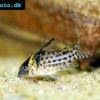 Agassizii’s
Agassizii’s  Spotted
Spotted  Skunk
Skunk  Corydoras
Corydoras 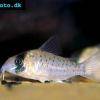 Fairy
Fairy  Corydoras
Corydoras  Pink
Pink 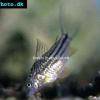 San
San  Bond’s
Bond’s  Spotted
Spotted  Tailspot
Tailspot  Concolor
Concolor  Cope’s
Cope’s 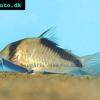 Sand’s
Sand’s  False
False  False
False 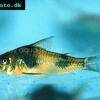 Ehrhardt’s
Ehrhardt’s  Elegant
Elegant 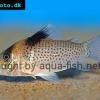 Saddle
Saddle  Fowler’s
Fowler’s  Gomezi
Gomezi 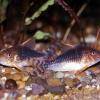 Palespotted
Palespotted 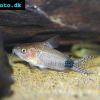 Guapore
Guapore  Dainty
Dainty  Mosaic
Mosaic  Imitator
Imitator  Julii
Julii  Leopard
Leopard  Slant-bar
Slant-bar  Bluespotted
Bluespotted  False
False  Bandit
Bandit  Mini
Mini 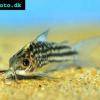 Napo
Napo  Corydoras
Corydoras 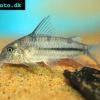 Blue
Blue  Nijssen’s
Nijssen’s 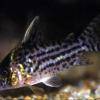 Ornate
Ornate  Peppered
Peppered  Panda
Panda  Albertini
Albertini  Pastaza
Pastaza  Corydoras
Corydoras  Many-spotted
Many-spotted  Pretty
Pretty  Dwarf
Dwarf  Iridescent
Iridescent  Reticulated
Reticulated 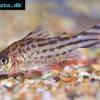 Bannertail
Bannertail  Robust
Robust  Schwartz’s
Schwartz’s  Black
Black 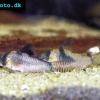 Longnosed
Longnosed  Seuss’
Seuss’  Smudge
Smudge  Masquerade
Masquerade 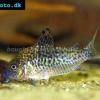 False
False  Millenium
Millenium  Pinkthroat
Pinkthroat  Sterba’s
Sterba’s  Longsnout
Longsnout  False
False  Miguelito
Miguelito 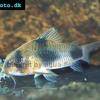 Twosaddle
Twosaddle  Xingu
Xingu 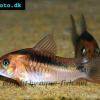 Black
Black  Porthole
Porthole  Flagtail
Flagtail  Brown
Brown  Spotted
Spotted